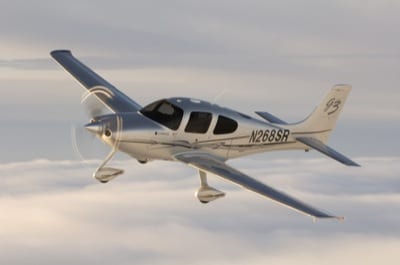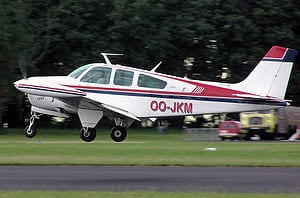By TODD HUVARD.
The used aircraft market has recovered considerable momentum during the past several months, thanks to small business owners who have begun to expand and move ahead in the growing economy. When these guys started buying airplanes again, I knew the recession was behind us.
The market snapshot I see is through the lens of my brokerage, which offers a broad spectrum of makes, models, and types. I sell some of everything — from Cessna 150s to King Airs and the occasional business jet. And some of everything has been selling at a robust clip lately.
Twins
The cabin class twins that languished so terribly during the downturn, and that are at historically low price levels, are now targets for buyers who believe the bottom has been touched. These buyers have been selective, but are making deals on these bargain ships and investing in fresh avionics.
We have sold a number of bigger birds, like C421B, C414, C340, Navajo, and King Air airframes in the past 60 days, whereas during the past four years it was difficult to get a nod from buyers on the same planes.
The prices are low, but as buyers are now moving in, and as the supply of well-maintained and up-to-date airframes is reducing, these prices will rebound somewhat. There is still huge utility in many of the airframes, even with the higher operating costs.
The light twins, with the exception of the Barons, are still embattled on price. There are domestic buyers when the price is low enough — but that will be for the hard-flown run-outs. South Americans are still buying the nicer twins, mostly for service in Brazil, Argentina and Uruguay.
The South Americans are savvy buyers, but recently, there has been a growing influx of “middle-man” buyers who don’t know airplanes. These newbie international buyers have complicated the market and many brokers have spurned the action. Reputable buyers in South America are still abundant and, while hard-nosed, generally do what they say and bring the bacon to buy.
There are numerous legal and logistical challenges to consider in making international deals work. If you are selling your aircraft yourself, you will want to work with an experienced broker if your prospect is South American.
Singles
The upper end of the single-engine market is good now: Cirrus is busy again at the factory, reportedly tossing about eight aircraft a week out the doors. Demand is high, with orders backed up for a reported six months. Prior to the recession, Cirrus was pumping out around 16 a week, a figure that fell precipitously with the economic downturn. Now the company is slowly letting the rope out of the production line while it makes sure the ground is solid.
The airplane Cirrus is building, the SR22 Generation 5 (pictured below), is meeting a pent-up demand for the most up-to-date airframes.
As the fulfillment of its awesome marketing, Cirrus brought a wealthy new generation of buyers into aviation. Its Jaguar-style selling style taught them to fly and they are now experienced pilots. They still have plenty of money and plenty of love for Cirrus. And now they love the new G5 and well, dammit, they are buying one.
As a result, we are beginning to see some relatively good buys in the “recession airframes,” the G3 Perspectives built from 2009-2012, as those owners move into the G5. Prices will cave a bit on the G3s, which until now have remained high as the only late model game in town.
Still in moderate demand are 2005-2007 G2 GTS models with air conditioning, but mainly low-time airframes. As this group gets closer to the 10-year parachute re-pack dates, the values will decline and a bit of a buyer’s market will persist in these vintages. The buyers want them, but only at discounted prices.
The real bargain Cirrus models are the “straight” SR22 genre, built before 2005. The airframes are getting to the age when the parachute re-pack is due, but the price point is killer — well below $200K. These early SR22s offer fantastic performance and avionics at the former price point of much older Bonanzas and 210s.
The Columbia Lancairs are undervalued and becoming more of a specialty airplane, along the lines of the Mooniacs and Grumman owner cults. Columbia owners are very loyal to the type, and are confident that the airplane is much better than the Cirrus.
Of course, there are not enough Cessna Corvalis owners to consider as a mainstream market — they are harder to spot than a Sasquatch. Accordingly, the Columbias will be a mere bucketful in a sea of SR22s in the future. If you buy one, understand that the resale will be tougher because of lower average demand.
The mid-market for singles now is in the $90K to $150K price range. This is the trouble zone, as it still takes a brassy buyer to ante up that much dough for a flying machine. Some of these airframes — F33 Bonanza, Cessna 210N and Piper Saratogas, for example — are having more problems attracting buyers.
The A36 Bonanza (left) is another matter, as fierce competition for the airframe from South American buyers has made really nice A36s as scarce as hen’s teeth. Buyers in this category tend to be experienced old school pilots who grew up with these withering airframes. They look for the best available airplanes and have a hard time finding them — the fleet is in such aged decrepitude that it is just more difficult to find an airframe without significant warts.
Accepting these faults has become de rigeur if you want to own one. The costs of maintenance outstripped the willingness of most owners to ante up for the task. The pre-buys are dreadful and usually have lengthy squawk lists. Without preparation, buyers and sellers are having a hard time getting together on purchases. Buyers have to be realistic and know they need to budget at least 20% of the purchase price for after-sale upgrades and resuscitation.
I go through dozens of pre-buy inspections a year — enough that, while I am not an A&P/IA, I have a pretty good insight on the trouble spots for most types. All of the aircraft have some squawks, and every shop will produce a different list of them.
I have become resigned that three things are going to happen at the pre-buy: 1.) There will be squawks on every plane; 2.) The seller will go into it thinking they have a perfect airplane; and 3.) The buyer’s mechanic will say it is the worst airplane ever, maintained by circus clowns in the past.
If you are serious about selling, be pragmatic enough to plan on holding a few grand in the sales price to make corrections or adjustments at the pre-buy in order to get the deal closed. If you think you don’t have to be flexible, you are right — but you sure won’t sell the thing anytime soon. So just know there will be squawks and you will need to adjust the final sales price to “git ‘r done.”
The bottom strata of the market include the Cherokees, Skyhawks, and other spam cans that are now sagging to price levels between $20K and $80K. The buyers of these aircraft are like buzzards circling road-kill. These planes are the darlings of the ramp that are disintegrating in plain view of us all. There is still a tug-o-war between buyers and sellers in this market. The sellers are losing because they have to sell for less than they bought the airplanes before the recession. The buyers are losing because the airplane depreciates before the wire transfer to buy it has gone through.
Bottom line on the old airframes is that they just are not as valuable as they once were, and the costs for updating or maintaining them have not diminished. They are not going to appreciate, so buy accordingly. If the one you are looking at is a solid example, it will cost you more than the average junker out there now.
As for antiques and classics, Light-Sport Aircraft (LSA), homebuilts, and specialty singles, it is a status quo market. As a seller in this genre, you can bet every buyer is a precious resource to be treated gently. They are few and far between — so make the deal and move on.
The downturn for the piston aircraft market is over. The market rebound may not look like the Dow, but it is heading in that direction finally. Good hunting!
Todd Huvard, president of AircraftMerchants, a North Carolina-based aircraft brokerage, is a commercial pilot with multi-engine, instrument and seaplane ratings and is typed in Cessna 500 and Falcon 20 jets. He founding editor and publisher of The Southern Aviator.


